Scholars’ Study #4

We are pleased to circulate the fourth edition of the Scholars’ Study. The aim is to inform our community about publications, events, or other news in relation to the scholars and more widely to psychoanalysis beyond the clinic. The Scholars’ Study should facilitate a home and community for the Scholars where we can all share ideas, get to know each other, and learn about events, or other activities.
We are pleased to share the latest edition of the newsletter with you.
Please continue to send us your news, publications, events, and texts.
Editors: Dr. Theodora Thomadaki (University of Roehampton) and Dr. Jacob Johanssen (St. Mary’s University)
Associate Editors: Ruth Llewellyn, Amy Tatum and Michael Clarke
CONTENTS:
- An interview with Dr Noreen Giffney (Psychoanalytic Psychotherapist, and Lecturer in Counselling, Ulster University, Belfast)
- Dr Lucy Stroud: research on the consumption of Real Life magazines “Melancholic Communities and Real Life Women’s Magazines”
- Dr Zack Eleftheriadou: contributed to ‘Finding the Piggle’ and ‘The Child Replacement Forum’
- Dr Jacob Johanssen: new book published ‘Fantasy, Online Misogyny and the Manosphere Male Bodies of Dis/Inhibition’
Texts from our Scholars:
- Armand D’Angour: Sophocles’ Oedipus Tyrannus: a drama of knowledge and blindness
- Caroline Zilboorg: The first full-length biography of the Russian-American psychoanalyst Gregory Zilboorg
- Ruth Llewellyn: Animal Crossing New Horizons: Playing through the pandemic
- Women In Horror Films (Livestreams), 30 and 31 October 2021
- Inviting abstracts for the 2022 Research Conference ‘Striving for equality, diversity and inclusion in research, practice and policy’, 20 – 21 May 2022, Dundee and online, with co-hosts The University of Abertay
An Interview with BPC Scholar Dr Noreen Giffney
(Psychoanalytic Psychotherapist, and Lecturer in Counselling, Ulster University, Belfast)
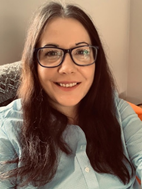 Noreen Giffney is a Psychoanalytic Psychotherapist who completed her clinical training in the Department of Psychiatry, School of Medicine at Trinity College Dublin. She is the author of the book, The Culture-Breast in Psychoanalysis: Cultural Experiences and the Clinic (Routledge 2021), and the author and/or editor of a number of articles and books on psychoanalysis, psychosocial studies, and critical theory. Noreen originally trained as a medieval historian, after which she researched contemporary theories of gender and sexuality, before finding her way to psychoanalysis.
Noreen Giffney is a Psychoanalytic Psychotherapist who completed her clinical training in the Department of Psychiatry, School of Medicine at Trinity College Dublin. She is the author of the book, The Culture-Breast in Psychoanalysis: Cultural Experiences and the Clinic (Routledge 2021), and the author and/or editor of a number of articles and books on psychoanalysis, psychosocial studies, and critical theory. Noreen originally trained as a medieval historian, after which she researched contemporary theories of gender and sexuality, before finding her way to psychoanalysis.
She is particularly interested in what happens emotionally and psychically when we engage with cultural objects (film, art, literature, music) (Giffney 2021); psychosocial factors and their impact on the transference-countertransference dynamic in the consulting room (Giffney and Watson 2017); and the writings of Wilfred Bion (Giffney 2013a, 2013b, 2016). She has recently joined the Editorial Team for the British Psychoanalytic Council’s New Associations magazine. Noreen lives in County Donegal in the Republic of Ireland and is employed as a Lecturer in Counselling at Ulster University, Belfast in Northern Ireland.
Expertise: Psychoanalysis; psychosocial studies; critical theory; visual culture.
1) How did you first encounter psychoanalysis?
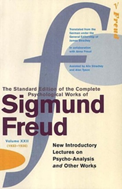 I first encountered psychoanalysis as an undergraduate student when I read English literature at University College Dublin. We were taught a module in first year on literary theory and Sigmund Freud’s (1933[1932]) lecture on ‘Femininity’ was one of the required texts. I remember being appalled at what I perceived to be its gauche misogyny, with the result that I did not read any further pieces by Freud for the duration of my degree. I found my way back to Freud’s works through psychoanalytic writers, such as Luce Irigaray, Julia Kristeva, Hélène Cixous, Juliet Mitchell and Jacqueline Rose, while I was working on my PhD. It was through their writings, which contextualised Freud’s ideas in the process of articulating their own, that I came to read Freud’s (1915) essay on ‘The unconscious’ and appreciated its nuance. It was such a different reading experience of Freud the second time around and one that led me to read most of his published work over the course of the next couple of years, as well as the writings of Melanie Klein, which in turn prompted me to apply to undertake a clinical training in psychoanalytic psychotherapy in Dublin.
I first encountered psychoanalysis as an undergraduate student when I read English literature at University College Dublin. We were taught a module in first year on literary theory and Sigmund Freud’s (1933[1932]) lecture on ‘Femininity’ was one of the required texts. I remember being appalled at what I perceived to be its gauche misogyny, with the result that I did not read any further pieces by Freud for the duration of my degree. I found my way back to Freud’s works through psychoanalytic writers, such as Luce Irigaray, Julia Kristeva, Hélène Cixous, Juliet Mitchell and Jacqueline Rose, while I was working on my PhD. It was through their writings, which contextualised Freud’s ideas in the process of articulating their own, that I came to read Freud’s (1915) essay on ‘The unconscious’ and appreciated its nuance. It was such a different reading experience of Freud the second time around and one that led me to read most of his published work over the course of the next couple of years, as well as the writings of Melanie Klein, which in turn prompted me to apply to undertake a clinical training in psychoanalytic psychotherapy in Dublin.
I learned a number of things from those early reading experiences of Freud. When I first encountered his work, I was still grappling with the idea of reading literary texts through theoretical paradigms, which seemed to act as a barrier between the reader and the piece of literature. As I have come to specialise in theoretical ideas over the years, I have increasingly appreciated that theory does come between the reader and the text but, in doing so, it acts as a frame and opens up a transitional space for the reader’s encounter with their experience. My first experience of reading Freud’s writing was visceral: I recoiled from the piece and dismissed Freud’s work, as so many people still do, as outmoded, ridiculous and offensive. This reaction stayed with me and made me interested in reading itself as an experience that happens alongside the pursuit of content. Reading is never simply an intellectual endeavour; it is one that encompasses feelings, and there is always an unconscious component. Reading any text, psychoanalytic or otherwise, offers us an opportunity to engage with the author’s ideas but also with ourselves. This initial experience of reading Freud’s work has influenced how I teach psychoanalytic ideas to clinical trainees and academic students. It has taught me the importance of framing and contextualising theoretical ideas, particularly when they are new and might be challenging, as well as being cognisant that while theory is something we read about, theory and how we encounter it is also something we might incorporate or introject, identify with and make use of psychically. These reading encounters offer opportunities to develop our capacity for self-awareness and self-reflectivity, which is vital for clinical work with patients.
2) Why did you decide to become a Psychoanalytic Psychotherapist as well as a scholar who draws on psychoanalysis?
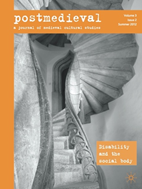 I have had a long-standing interest in thinking about how trauma is experienced, expressed, and worked through. This interest was initially an academic endeavour before becoming a clinical one. After completing my undergraduate degree in English literature and history at University College Dublin, I continued on to do a PhD in medieval history at the same university (Giffney 2004). My research focused on the impact of the Mongol invasion of Christendom and the Rus’ principalities (now Europe and Russia) during the late 1230s/early 1240s. After embarking upon a number of violent onslaughts against populations in these regions, the Mongols promptly ceased their activities and withdrew without an explanation, which left those who survived fearing their return. I was interested in understanding how writers expressed and processed traumatic experiences and what they did with affective states like horror, fear and terror. I discovered that affect manifested in how they wrote about things rather than merely in what they said. They employed adverbs and adjectives in a dramatic and evocative way, while framing experiences in terms of myths about monsters and Biblical narratives about the end of the world (Giffney 2012).
I have had a long-standing interest in thinking about how trauma is experienced, expressed, and worked through. This interest was initially an academic endeavour before becoming a clinical one. After completing my undergraduate degree in English literature and history at University College Dublin, I continued on to do a PhD in medieval history at the same university (Giffney 2004). My research focused on the impact of the Mongol invasion of Christendom and the Rus’ principalities (now Europe and Russia) during the late 1230s/early 1240s. After embarking upon a number of violent onslaughts against populations in these regions, the Mongols promptly ceased their activities and withdrew without an explanation, which left those who survived fearing their return. I was interested in understanding how writers expressed and processed traumatic experiences and what they did with affective states like horror, fear and terror. I discovered that affect manifested in how they wrote about things rather than merely in what they said. They employed adverbs and adjectives in a dramatic and evocative way, while framing experiences in terms of myths about monsters and Biblical narratives about the end of the world (Giffney 2012).
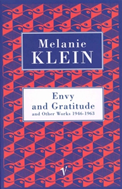 This academic interest in tracing the psychological vicissitudes of trauma developed, over time, into a desire to undertake clinical training (Giffney 2017). This interest in clinical training also emerged from my reading of Melanie Klein’s writings which made such sense to me, intuitively. What Klein said felt right to me but I did not know why and wanted to explore these ideas in a more experiential way. As I trained and began working clinically as a Psychoanalytic Psychotherapist, I began to appreciate how trauma works psychically and differently within each individual patient: how the effects of trauma leak out of the unconscious in parts of the body, in behavioural repetitions, or in relational dynamics, all of which present as symptoms. Working over the past few years as a Lecturer in Northern Ireland has also impressed on me the stark consequences of mass traumatisation and what happens when traumatic experiences are communicated unconsciously, via a process of projective identification, from one generation to the next.
This academic interest in tracing the psychological vicissitudes of trauma developed, over time, into a desire to undertake clinical training (Giffney 2017). This interest in clinical training also emerged from my reading of Melanie Klein’s writings which made such sense to me, intuitively. What Klein said felt right to me but I did not know why and wanted to explore these ideas in a more experiential way. As I trained and began working clinically as a Psychoanalytic Psychotherapist, I began to appreciate how trauma works psychically and differently within each individual patient: how the effects of trauma leak out of the unconscious in parts of the body, in behavioural repetitions, or in relational dynamics, all of which present as symptoms. Working over the past few years as a Lecturer in Northern Ireland has also impressed on me the stark consequences of mass traumatisation and what happens when traumatic experiences are communicated unconsciously, via a process of projective identification, from one generation to the next.
3) You have published a number of clinical articles on the writings of Wilfred Bion. What is the focus of this work?
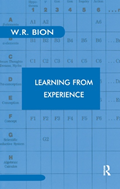 I developed a keen interest in Wilfred Bion’s work while I was doing my psychoanalytic psychotherapy training. I found reading Bion’s work an intense experience: He appeared to produce the affective state he was describing in the reader, but I had no idea how he accomplished this. I was particularly curious about Bion’s (1967, 1970) phrase ‘without memory or desire’ and how the word ‘desire’ is operationalised by Bion in different ways throughout his writings. I was also interested in how psychoanalytic writers tend to co-opt and apply this phrase in a rather concrete and formulaic way, so that it becomes somewhat of a mantra. As David Bell (2011) puts it, ‘[Bion’s] advice that analysts should eschew memory and desire, a poetic expression of Freud’s “evenly-suspended attention”, is easily transformed into a near-oracular statement to be worshipped in a cult-like manner’ (p. 99). The phrase ‘without memory or desire’ also resonated with me, I think, because I began my academic training in the discipline of history with an investment in examining the discourses of memory, before moving on to research contemporary theories of gender and sexuality with a commitment to investigating the ways in which desire operates interpsychically and intrapsychically. So, in a sense, the research project I embarked upon, which resulted in the publication of three clinical articles, offered me an opportunity to integrate different aspects of my professional interests.
I developed a keen interest in Wilfred Bion’s work while I was doing my psychoanalytic psychotherapy training. I found reading Bion’s work an intense experience: He appeared to produce the affective state he was describing in the reader, but I had no idea how he accomplished this. I was particularly curious about Bion’s (1967, 1970) phrase ‘without memory or desire’ and how the word ‘desire’ is operationalised by Bion in different ways throughout his writings. I was also interested in how psychoanalytic writers tend to co-opt and apply this phrase in a rather concrete and formulaic way, so that it becomes somewhat of a mantra. As David Bell (2011) puts it, ‘[Bion’s] advice that analysts should eschew memory and desire, a poetic expression of Freud’s “evenly-suspended attention”, is easily transformed into a near-oracular statement to be worshipped in a cult-like manner’ (p. 99). The phrase ‘without memory or desire’ also resonated with me, I think, because I began my academic training in the discipline of history with an investment in examining the discourses of memory, before moving on to research contemporary theories of gender and sexuality with a commitment to investigating the ways in which desire operates interpsychically and intrapsychically. So, in a sense, the research project I embarked upon, which resulted in the publication of three clinical articles, offered me an opportunity to integrate different aspects of my professional interests.
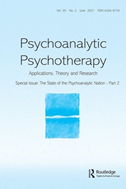 I wrote a piece entitled ‘Desire in psychoanalytic psychotherapy: The writings of W.R. Bion’, which was published in the journal, Psychoanalytic Psychotherapy (2013a). I undertake a close textual analysis of how Bion uses the word ‘desire’ in his writings. I begin by outlining what Bion has to say about what it means to be ‘with desire’ and its consequences for analytic work, as well as the discursive links between ‘desire’ and ‘memory’ and ‘understanding’. I then consider what it means to be in a state of being ‘without desire’ and how that relates to negative capability, primary ignorance, acts of faith, and O. Following on from this, I employ the caesura to think about the psychical process by which a psychoanalyst might move from being ‘with’ to being ‘without’ desire in the analytic setting.
I wrote a piece entitled ‘Desire in psychoanalytic psychotherapy: The writings of W.R. Bion’, which was published in the journal, Psychoanalytic Psychotherapy (2013a). I undertake a close textual analysis of how Bion uses the word ‘desire’ in his writings. I begin by outlining what Bion has to say about what it means to be ‘with desire’ and its consequences for analytic work, as well as the discursive links between ‘desire’ and ‘memory’ and ‘understanding’. I then consider what it means to be in a state of being ‘without desire’ and how that relates to negative capability, primary ignorance, acts of faith, and O. Following on from this, I employ the caesura to think about the psychical process by which a psychoanalyst might move from being ‘with’ to being ‘without’ desire in the analytic setting.
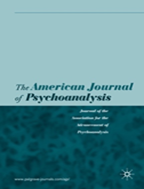 I wrote a second piece entitled ‘Desiring (with) Bion: An experience in reading’ which was published in the The American Journal of Psychoanalysis (2013b). This piece is less a textual analysis and more a reflection on my experience of reading Bion’s (1962a) Learning from Experience, and how the reading experience offers the clinical reader a chance to reflect on the operation of transference with regards to the text specifically and clinical work more generally. I argue that Bion’s work ‘cannot simply be read but must be felt’ (p. 89). In thinking about Learning from Experience as an affective, performative and enigmatic text, I was interested in exploring, experientially and theoretically, what Bion does to the reader, and how the impact of that doing helps the reader to become more self-aware, self-reflective and insightful about their countertransference in the consulting room.
I wrote a second piece entitled ‘Desiring (with) Bion: An experience in reading’ which was published in the The American Journal of Psychoanalysis (2013b). This piece is less a textual analysis and more a reflection on my experience of reading Bion’s (1962a) Learning from Experience, and how the reading experience offers the clinical reader a chance to reflect on the operation of transference with regards to the text specifically and clinical work more generally. I argue that Bion’s work ‘cannot simply be read but must be felt’ (p. 89). In thinking about Learning from Experience as an affective, performative and enigmatic text, I was interested in exploring, experientially and theoretically, what Bion does to the reader, and how the impact of that doing helps the reader to become more self-aware, self-reflective and insightful about their countertransference in the consulting room.
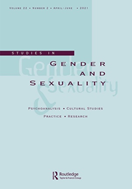 I wrote a third piece entitled ‘A theory of thinking: A theory of desiring’ which was published in a special issue on Bion’s work in the journal, Gender and Sexuality (2016). I focus on Bion’s (1962b) work on thinking and desire within the context of theories of countertransference. I argue that his theory of thinking is also implicitly a theory of desiring. In his theory of thinking, Bion makes a distinction between ‘thoughts’ and ‘thinking’. I make use of this distinction to formulate, what I term, a theory of desiring, in order to consider what happens in the consulting room when a patient does not have a capacity for desiring. Instead, the patient is consumed with wants and craves rather than desires. Craving is a concrete process, akin to Bion’s (1962a) ‘disturbance of thought’ (p. 62), in contrast to desiring, which includes a capacity for thinking and symbolisation.
I wrote a third piece entitled ‘A theory of thinking: A theory of desiring’ which was published in a special issue on Bion’s work in the journal, Gender and Sexuality (2016). I focus on Bion’s (1962b) work on thinking and desire within the context of theories of countertransference. I argue that his theory of thinking is also implicitly a theory of desiring. In his theory of thinking, Bion makes a distinction between ‘thoughts’ and ‘thinking’. I make use of this distinction to formulate, what I term, a theory of desiring, in order to consider what happens in the consulting room when a patient does not have a capacity for desiring. Instead, the patient is consumed with wants and craves rather than desires. Craving is a concrete process, akin to Bion’s (1962a) ‘disturbance of thought’ (p. 62), in contrast to desiring, which includes a capacity for thinking and symbolisation.
4) How would you describe the clinical concept you term ‘the culture-breast’ in your book?
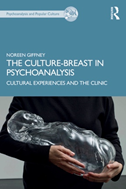 The breast is one of the central clinical concepts in psychoanalysis. There are over 10,000 references to the word ‘breast’ in the Psychoanalytic Electronic Publishing (PEP) database (1998- ), for example (Giffney 2021, p. 90). While referring concretely to the mother’s breast or bottle that feeds the dependent infant, the term describes more symbolically what happens emotionally and unconsciously when we engage with an experience. The breast is used throughout psychoanalysis as a metaphor for the environmental context and provision, an external stimulus, and a space for the psychical operation of introjections and projections (p. 89). I introduce ‘the culture-breast’ as a new clinical concept to address the therapeutic challenges encountered by patients whose environmental deprivation prompts their psychical reliance on cultural objects (film, art, literature, music) for functions optimally performed by human caregivers (pp. 127-128).
The breast is one of the central clinical concepts in psychoanalysis. There are over 10,000 references to the word ‘breast’ in the Psychoanalytic Electronic Publishing (PEP) database (1998- ), for example (Giffney 2021, p. 90). While referring concretely to the mother’s breast or bottle that feeds the dependent infant, the term describes more symbolically what happens emotionally and unconsciously when we engage with an experience. The breast is used throughout psychoanalysis as a metaphor for the environmental context and provision, an external stimulus, and a space for the psychical operation of introjections and projections (p. 89). I introduce ‘the culture-breast’ as a new clinical concept to address the therapeutic challenges encountered by patients whose environmental deprivation prompts their psychical reliance on cultural objects (film, art, literature, music) for functions optimally performed by human caregivers (pp. 127-128).
While often showing an impressive resilience for psychical survival in the face of considerable environmental adversity, patients who depend on cultural objects in this way tend to develop rigid psychical defences which impact on their capacity to relate to themselves and others, while draining experience of aliveness. Part of the analytic work with patients who use cultural objects in this way involves weaning them off the culture-breast through the transference relationship, towards a more satisfactory relationship with their objects, cultural and otherwise. This is painful work for patients and can take several years. In my book, I explore the operation of the culture-breast as a screen memory, a psychic retreat and a container though an analysis of a series of brief vignettes (Giffney 2021, pp. 127-128).
The culture-breast is also a term I use to trace the psychical importance of cultural objects in the lives of patients and psychoanalytic clinical practitioners more generally outside the consulting room. What happens to us emotionally and unconsciously when we engage in cultural experiences, for example, when we watch a film, listen to a piece of music, read a novel, or interact with a piece of art? How might the psychical workings of these cultural encounters relate to our earliest feeding experiences as babies? What, in other words, might our attachments to, and interactions with, cultural objects tell us about ourselves? As I say in my book, ‘We are fed at the culture-breast, not wholly but to differing degrees’ (Giffney 2021, p. xxi). We all make use of cultural objects of one form or another emotionally and unconsciously. These cultural experiences are necessary. They enrich our lives (p. 103). They also facilitate us connecting with other people, for example, when we attend a film, concert, play or art exhibition with a friend, or discuss a novel in a book club. Films are often scarier or more amusing in a cinema filled with the screams and laughter of other people than when we watch them alone on our computer screen. Cultural experiences can, moreover, sometimes provide comfort and hope when we are struggling and feel no-one understands what we are going through. They offer us sites for identification. Connecting with a song, a character in a film or book, a piece of art, or the lines in a poem can bring us back to ourselves and help us to keep going. The Covid-19 pandemic has brought into sharp relief just how significant our encounters with cultural objects can be in times of stress and distress; in the face of trauma when experiences cannot be symbolised, yet need to be contained.
5) Can you tell us about any projects you are currently working on?
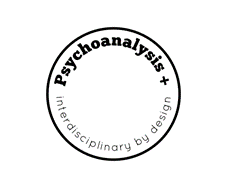 I am preparing to convene a small interdisciplinary reading group around the chapters in The Culture-Breast in Psychoanalysis, which will begin meeting online in January 2022. The reading group will be open to clinical practitioners of psychoanalysis, psychotherapy, counselling, clinical and counselling psychology, and psychiatry, as well as artists, curators and academics from a range of disciplinary backgrounds. The focus will be on discussing the chapters themselves (one per month) while also attending to what the reading experience brings up for participants with regards to their own work. This reading group will form part of ‘Psychoanalysis +’, an international, interdisciplinary initiative I founded in 2013, which brings together clinical, academic and artistic approaches to, and applications of, psychoanalysis (Giffney 2021, pp. 41-51). Attendance will be free and there will be CPD points available for participants. The only requirements will be for group members to commit to attending all five sessions of the group, obtain a copy of the book and read one chapter in advance of each meeting. For enquiries about joining the group, please email me.
I am preparing to convene a small interdisciplinary reading group around the chapters in The Culture-Breast in Psychoanalysis, which will begin meeting online in January 2022. The reading group will be open to clinical practitioners of psychoanalysis, psychotherapy, counselling, clinical and counselling psychology, and psychiatry, as well as artists, curators and academics from a range of disciplinary backgrounds. The focus will be on discussing the chapters themselves (one per month) while also attending to what the reading experience brings up for participants with regards to their own work. This reading group will form part of ‘Psychoanalysis +’, an international, interdisciplinary initiative I founded in 2013, which brings together clinical, academic and artistic approaches to, and applications of, psychoanalysis (Giffney 2021, pp. 41-51). Attendance will be free and there will be CPD points available for participants. The only requirements will be for group members to commit to attending all five sessions of the group, obtain a copy of the book and read one chapter in advance of each meeting. For enquiries about joining the group, please email me.
I am writing a chapter on case study methodologies for The Handbook of Psychosocial Studies, edited by Stephen Frosh, Marita Vyrgioti and Julie Walsh, which will be published by Palgrave Macmillan in 2024. The chapter will offer an overview of the development of the case study as a clinical teaching tool and way of representing clinical experiences, techniques and concepts in psychoanalysis, as well as a research methodology within psychosocial studies. I will extend the discussion of the Cultural Encounters Case Study Method, which I introduce in The Culture Breast in Psychoanalysis. This Method is a new pedagogy I have been developing over the past twelve years for teaching psychoanalytic concepts to clinical and academic groups (Giffney 2021, pp. 53-88).
I am always happy to hear from people who are interested in discussing the possibility of collaborating on an event or a publication, so please email me.
References:
Bell, David (2011). Bion: The phenomenologist of loss. In Chris Mawson (Ed.), Bion Today (pp. 81-101). London and New York, NY: Routledge.
Bion, Wilfred R. (1962a). Learning from Experience. London: Karnac.
_____ (1962b). A theory of thinking. In Second Thoughts (pp. 110-119). London: Karnac, 1984.
_____ (1967). Notes on memory and desire. In Cogitations (new extended edition), ed. Francesca Bion (pp. 380-385). London: Karnac, 1992.
_____ (1970). Opacity of memory and desire. In Attention and Interpretation (pp. 41-54). London: Karnac, 1984.
Freud, Sigmund (1915). The unconscious. In The Standard Edition of the Complete Psychological Works of Sigmund Freud, vol. 14, ed. James Strachey in collaboration with Anna Freud and assisted by Alix Strachey and Alan Tyson (pp. 159-215). London: Vintage, 2001[1953]).
_____ (1933[1932]). Femininity. In The Standard Edition of the Complete Psychological Works of Sigmund Freud, vol. 22, ed. James Strachey in collaboration with Anna Freud and assisted by Alix Strachey and Alan Tyson (pp. 112-135). London: Vintage, 2001[1953]).
Giffney, Noreen (2004). ‘The age is drowned in blood’: Reading Anti-Mongol Propaganda, 1236-55. Unpublished PhD dissertation. Dublin: University College Dublin.
_____ (2012). Monstrous Mongols. Postmedieval: A Journal of Medieval Cultural Studies 3.2:227-245.
_____ (2013a). Desire in psychoanalytic psychotherapy: The Writings of W.R. Bion. Psychoanalytic Psychotherapy 27.3: 215-227.
_____ (2013b). Desiring (with) Bion: An experience in reading. American Journal of Psychoanalysis 73.3: 288-304.
_____ (2016). A theory of thinking: A theory of desiring. Studies in Gender and Sexuality 17.3:150-164.
_____ (2017). Psychoanalysis in Ireland: An interview with Noreen Giffney. Breac: A Digital Journal of Irish Studies 7. https://breac.nd.edu/articles/psychoanalysis-in-ireland-an-interview-with-dr-noreen-giffney/ Accessed 28 July 2021.
_____ (2021) The Culture-Breast in Psychoanalysis: Cultural Experiences and the Clinic. Abingdon, OXON and New York, NY: Routledge.
_____ and Eve Watson, eds. (2017). Clinical Encounters in Sexuality: Psychoanalytic Practice and Queer Theory. New York, NY: Punctum Books.
Psychoanalytic Electronic Publishing (PEP) Database (1998- ). http://www.pep-web.org/ Accessed 28 July 2021.
News from our Scholars
Dr Lucy Stroud
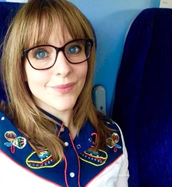 I recently gained my PhD from the University of Aberdeen. My research draws on a psychosocial perspective to highlight the neoliberal agenda that operates through the production and consumption of Real Life magazines and examines their emotional and psychosocial impact on both readers and the broader media environment. Themes of socio-economic and political loss interest me and I explore this through a psychosocial approach that analyses the psychical implications of this genre and its inscription in a particularly classed and gendered form of melancholia. Currently I am developing publications on these themes while also shaping a new research project about mediated images of loss during the Covid-19 pandemic.
I recently gained my PhD from the University of Aberdeen. My research draws on a psychosocial perspective to highlight the neoliberal agenda that operates through the production and consumption of Real Life magazines and examines their emotional and psychosocial impact on both readers and the broader media environment. Themes of socio-economic and political loss interest me and I explore this through a psychosocial approach that analyses the psychical implications of this genre and its inscription in a particularly classed and gendered form of melancholia. Currently I am developing publications on these themes while also shaping a new research project about mediated images of loss during the Covid-19 pandemic.
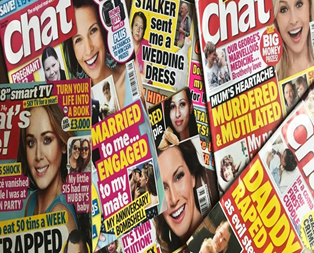 “Melancholic Communities and Real Life Women’s Magazines”.
“Melancholic Communities and Real Life Women’s Magazines”.
CRFAC Seminar at University of Roehampton: Invited speaker: Dr Lucy Stroud
The Real Life genre of women’s weekly magazines claim to represent the personal experiences of the magazines’ interviewees, targeting women from lower socio-economic backgrounds as its primary audience and asking them to sell their stories. The genre was formed in 1990 and can be viewed as problematic, exploitering the pain of vulnerable people. A psychosocial account argues that the psyche and society are symbiotic; what occurs socially has psychical reverberations. The 1980s is a precursor to the genre’s formation and was a turbulent period, with the uptake and dispersal of neoliberal socio-economic policies causing lasting social effects. In this seminar I discuss how the Real Life genre is symptomatic of a social melancholia that emerged during this period and how they can be read as an attempt to replace what was lost from the UK’s social landscape. Despite this, the representation and repetition of harrowing reader experiences conforms to an ahistorical narrative about gender and social class, in that women from this socio-economic backgrounds are both degraded and degrade themselves.
Dr Zack Eleftheriadou
Dr Zack Eleftheriadou has been engaged in varied fascinating activities recently. After the interest of the publication of the book “Finding the Piggle”, where she contributed a chapter on contemporary ideas, she was invited to teach Brazilian psychotherapists and psychoanalysts (A Clinica Com Criancas Pequanas), on “Psychotherapeutic work with young children with reference to Winnicott’s case of “The Piggle”. She has been recently been appointed as Deputy Director of the Confer Diploma in Psychopathology (for further information on context and speakers, visit the Confer website).
She has recently contributed to ‘The Replacement Child Forum’, contributed a lecture on diversity for the Anna Freud ITSEY course and she will be contributing to the 0-5 years, PGDip in CYP IAPT course at the Anna Freud course in July 2021 (speaking about Babies and their families across cultures). Additionally, she has just finished a year of a clinical discussion group at the Stephen Mitchell Centre, which was inspiring. She continues to examine PhD theses in psychotherapy and psychology and delighted to see some new projects in cross-cultural work. She also continues her work as an infant obs tutor, supervisor and therapist in North London.
Dr Jacob Johanssen
Fantasy, Online Misogyny and the Manosphere Male Bodies of Dis/Inhibition
Part of the Psychoanalysis and Popular Culture series from Routledge, edited by Prof Caroline Bainbridge and Prof Candida Yates
This book presents the first in-depth study of online misogyny and the manosphere from a psychoanalytic perspective.
The author argues that the men of the manosphere present contradictory thoughts, desires and fantasies about women which include but also go beyond misogyny. They are in a state of dis/inhibition: torn between (un)conscious forces and fantasies which erupt and are defended against. Dis/inhibition shows itself in self-victimization and defensive apathy as well as toxic agency and symbolic power and expresses itself in desire for and hatred of other bodies. The text draws on the psychoanalytic thinkers Klaus Theweleit, Elisabeth Young-Bruehl, Jessica Benjamin and Wilhelm Reich to present detailed analyses of the communities within the so-called manosphere, including incels, Men Going Their Own Way (MGTOW), alt-right YouTubers and NoFap users. Drawing on wider discussions about the status of sexuality in contemporary neoliberal technoculture since the sexual revolution of the late 1960s, it illuminates how sexuality, racism and images of the white male body shape the fantasies and affects of many men on the internet and beyond.
Integrating a unique theoretical framework to help understand how today’s increase in online misogyny relates to the alt-right and fascism, Online Misogyny and the Manosphere is an important resource for academics in a variety of fields including psychoanalysis, media and communication studies, internet studies, masculinity research and more.
Join us for a virtual book launch: 04 November, 6-8pm BST
Speakers:
Professor Candida Yates (Bournemouth University)
Professor John Mercer (Birmingham City University)
Associate Professor Diego Semerene (University of Amsterdam)
Texts from our Scholars
Armand D’Angour: Sophocles’ Oedipus Tyrannus: a drama of knowledge and blindness
Psychoanalysts rarely engage with the text of Sophocles’ Oedipus Tyrannus which so inspired Freud, but it is undoubtedly worth doing so. Freud wrote about Oedipus that “his destiny moves us only because it might have been ours — because the oracle laid the same curse upon us before our birth as upon him. It is the fate of all of us, perhaps, to direct our first sexual impulse towards our mother, and our first hatred and our first murderous wish against our father. Our dreams convince us that this is so” (Interpretation of Dreams, 1899). Observing that Oedipus Tyrannus strikes a chord with modern readers, he went on to propose that Oedipal desire is the universal cause of unconscious guilt and repression.
Other psychological resonances in the original story thrilled and disturbed ancient audiences, and exert a similar power on the modern reader. Sophocles’ play is replete with dramatic irony: up to the last minute we imagine and hope that things might happen otherwise, although we know that Oedipus himself is the killer of his father and lover of his mother. One major theme, therefore, is that of the quest for knowledge and its perils. Oedipus, whose intellectual skill led him to solve the sphinx’s riddle, is depicted as a character for whom knowledge and cleverness is central, the kind of man who will go to extremes to find answers. But it is his insistence on knowing the truth at all costs that leads to his downfall.
Secondly, the drama is designed like a detective story, with Oedipus seeking to track down the cause of the plague like a hunter stalking prey. But his conscious quest for knowledge is pursued at the cost of denying a less conscious kind of knowledge, which when brought to the surface destroys him. The perceptiveness for which he is celebrated makes him, unlike the prophet Teiresias (who is actually blind), unable to see that he is on the trail of his own ruin. At his moment of insight, he plunges himself into darkness by literally blinding himself.
Elements of wordplay in the Greek eluded Freud, and would surely have delighted him. The answer to the Sphinx’s riddle is “a man”, since the infant (“four legs in the morning”) becomes an adult (“two legs at midday”), and then an old man leaning on on a stick – that is, Oedipus himself; and while ‘Oedipus’ means ‘swollen foot’ (oid– as in oedema, pous as in ‘octopus’), it may also be heard as oi dipous, ‘alas, two-footed!’
Sophocles plays on another word with a similar sound: oida ‘I know’. When, at the start of the play the chorus beg the King to lift the plague with the words “you somehow know” (“oistha pou”), the unspoken rejoinder is “oida pou”, ‘I somehow know’. As the drama proceeds, we have an increasing sense of Oedipus somehow knowing what he is at pains explicitly to deny – until, in the end, the truth is forced onto his consciousness, making him want to stop seeing altogether.
This is an abbreviated version of a talk delivered by the author at the Tavistock Institute in June 2017.
Armand D’Angour, Professor of Classics, Jesus College Oxford. July 2021
Texts from our Scholars
Caroline Zilboorg: The first full-length biography of the Russian-American psychoanalyst Gregory Zilboorg
By Caroline Zilboorg:
- The Life of Gregory Zilboorg, 1890-1940: Psyche, Psychiatry and Psychoanalysis
- The Life of Gregory Zilboorg, 1940-1959: Mind, Medicine, and ManThis meticulously researched two-volume biography recounts the life of the charismatic Russian-American psychoanalyst Gregory Zilboorg from his birth as a Jew in Tsarist Russia in 1890 through his death in New York City in 1959. He served as secretary to the Minister of Labour in Kerensky’s revolutionary government and as a young physician just behind the Russian front during World War I before escaping to America in 1919.
After requalifying in psychiatry at Columbia University and analysis with Franz Alexander at the Psychoanalytic Institute in Berlin in the late 1920s, he became a prominent psychoanalyst in New York. His patients included wealthy and artistic figures, among them Marshall Field III, George Gershwin, Kay Swift, Moss Hart, Ralph Ingersoll, Lillian Hellman, Thomas Merton and members of the Warburg and de Menil Families as well as inmates at the notorious Sing Sing prison. He joined the Quakers in 1922, but turned increasingly towards traditional Christianity, converting to Catholicism in 1954.
His writing includes important histories of psychiatry, for which he is still known, as well as examinations of suicide and the relationship between psychiatry and the law. In his final work he argued that there was no incompatibility between psychoanalysis and religion.
Both books are published by Routledge in September 2021 and available from the publisher and from Amazon.
Texts from our Scholars
Ruth Llewellyn: Animal Crossing New Horizons: Playing through the pandemic
Ruth Llewellyn is a research student at the University of Roehampton. Ruth is currently employing psychoanalysis, specifically Object Relations Theory, to explore how players of Animal Crossing New Horizons experience and perform relatedness in the game space and process feelings of isolation and loneliness. Here Ruth shares some thoughts on Animal Crossing and the pandemic:
Feelings of loneliness and isolation have been highly publicised during the pandemic. However, while everyone felt lonely and isolated, young people aged 16-29 still report high levels of chronic loneliness and feelings of isolation (Gainsbury 2020). The pervasive nature of this loneliness is not new. It has deep roots within the Neoliberal ideology that has dominated recent political and economic discourse, placing great importance on individual self-interest and the competitive nature of individuals, replicating the economic market. Neoliberal ideology has mainly left younger generations in an insecure situation. In 2017, 35% of 25 to 34-year-olds were homeowners, down from 55% in 1997 (IFS 2018). This uncertainty is further heightened by precarious work practices such as zero-hour contracts, low wages and lack of progression. These positions are more likely to be held by those in the 18-24 category, particularly young people in the UK, with above-average levels of marginal part-time work compared to EU countries (EMPL 2016). It has been suggested that loneliness is experienced as a feature of this precarity (Auoici& Peyrache 2019); renters report higher loneliness levels than their homeowner counterparts (ONS 2018).
During the pandemic, people made specific use of video games to see and meet their friends online, creating new spaces for expressions of relatedness between players and their games. During lockdown, the gaming market in the UK hit a £7bn high, with £1.6bn more spent than in 2019. One of the most popular games to be released during lockdown is Animal Crossing: New Horizons (Nintendo 2020; hereafter: ACNH), which was released as much of the world went into lockdown. As a sandbox simulation game, Animal Crossing: New Horizons gives the player a great deal of creativity and freedom when playing the game. The social nature of ACNH also allowed players to create experiences missed because of the pandemic. From University graduations to hosting memorials for those lost to COVID, ACNH allowed players to create cathartic social and emotional experience that was missing in the pandemic context. As we have been forced to use digital tools and online communications technologies for the purposes of familial forms of communication, our investments in media have taken on aspects of emotionality with which they were not previously associated. The cultural context of the Coronavirus and Neoliberalism that surrounds ACNH are central to my research; an essential facet of my research is to better understand the unconscious dynamics behind player experience in relation to lived experience.
While ACNH has been popular among various age groups, it is the 18-30-year-old demographic who play the game the most. On their Animal Crossing island, players can own and decorate their own house while paying off debts to NPC’s (Non-playable characters) while creating and fostering a community of anthropomorphic creatures. Engagement with ACNH allows players to escape from the bleak prospects of a neoliberal experience, offering a more creative and intimate encounter and therefore offering a route out of a relentlessly neoliberal mindset. The pandemic has intensified experiences of being alone for many people, and ACNH had helped its players to find a way to overcome this experience by enabling people to play together while not being in one another’s physical presence through online multiplayer gameplay. At the same time, ACNH also allows gamers to play alone. Effectively, this invites an understanding of the game as facilitating a third area between player and game, which parallels Winnicott’s understanding of creative play emerging in a third, potential, or transitional space.
Throughout Winnicott’s work, play and creativity are essential themes as to Winnicott play is a crucial route to self-actualisation (Winnicott 1971); this emphasis on play, creativity, and relatedness makes Winnicott central to my research. The work of Winnicott offers the ability to expand the discussion of play to include the intimate qualities of playing video games, paying close attention to the unconscious dynamics that underpin this form of play. This emphasis on play and creativity creates exciting avenues of thought for those who want to explore and understand how technological innovations, Neoliberal ideology and the Coronavirus crisis have fundamentally influenced the way we experience and enact relatedness, which Winnicott sees as vital for self-development.
References:
Aouici, S. and Peyrache, M. (2019) Feelings of loneliness in later life: An analysis in the context of social and economic precariousness, Retraite Et Société, 82(2), pp.15-35.
Broughton, A. et al. (2016) Precarious Employment in Europe Part 1: Patterns, Trends and Policy Strategy . Available at: https://www.europarl.europa.eu/RegData/etudes/STUD/2016/587285/IPOL_STU(2016)587285_EN.pdf .
Gainsbury, S. (2020) Chart of the Week: Lockdown Loneliness and Anxiety Across the Generation. Nuffield Trust. Available at: https://www.nuffieldtrust.org.uk/resource/chart-of-the-week-lockdown-loneliness-in-the-younger-generations .
Hamilton, M. and Coates, S. (2020) Coronavirus and anxiety, great britain: 3 april 2020 to 10 may 2020. Office for National Statistics. June 15 Available at: https://www.ons.gov.uk/peoplepopulationandcommunity/wellbeing/articles/coronavirusandanxietygreatbritain/3april2020to10may2020 .
Hertz, N. (2020) The Lonely Century: A Call to Reconnect . 1st edn. London: Hodder & Stoughton.
Lebeau, V. (2019) Feeling poor: D.W. winnicott and Daniel Blake, New Formations, 96(1), pp.160-175.
Simpson, P. and Cribb, J. (2018) Barriers to Homeownership for Young Adults. IFS. Available at: https://ifs.org.uk/publications/13475 .
Winnicott, D.W. (1958) The capacity to be alone, in The Collected Works of D. W. Winnicott. Oxford University Press.
Winnicott, D.W. (1971) Playing and Reality. London: Tavistock Publishers.
Events
PROJECTIONS: Women in Horror Films (Livestreams)
Online course with Mary Wild
30-31 October 2021
14.00 – 17.00 each day
Price: £35-40
In this course, we will rely on psychoanalytic theory to investigate the feminine discursive position in horror cinema. We shall begin with classic titles from the 20th century, then move on to more recent releases, including lesser-known features. It is sometimes claimed that the portrayal of women in horror films is misogynistic, but here the proposition is that the horror genre affords us an indispensable language for approaching the more complex elements of female subjectivity.
For more information, visit the Freud Museum website.
2022 Research Conference ‘Striving for equality, diversity and inclusion in research, practice and policy’, 20 – 21 May 2022
Abstract submissions are being invited for the 2022 Research Conference ‘Striving for equality, diversity and inclusion in research, practice and policy’ which will be held in Dundee and online on 20-21 May 2022 with co-hosts The University of Abertay.
They welcome abstract submissions on any topic, but all submissions should address the theme of equality, diversity and inclusion either directly or indirectly. Unless noted, all submissions can either be delivered online or in-person. An abstract is required for every submission type as they all undergo blind peer review by an independent panel.
There is additional guidance on the BACP Research Conference website.
